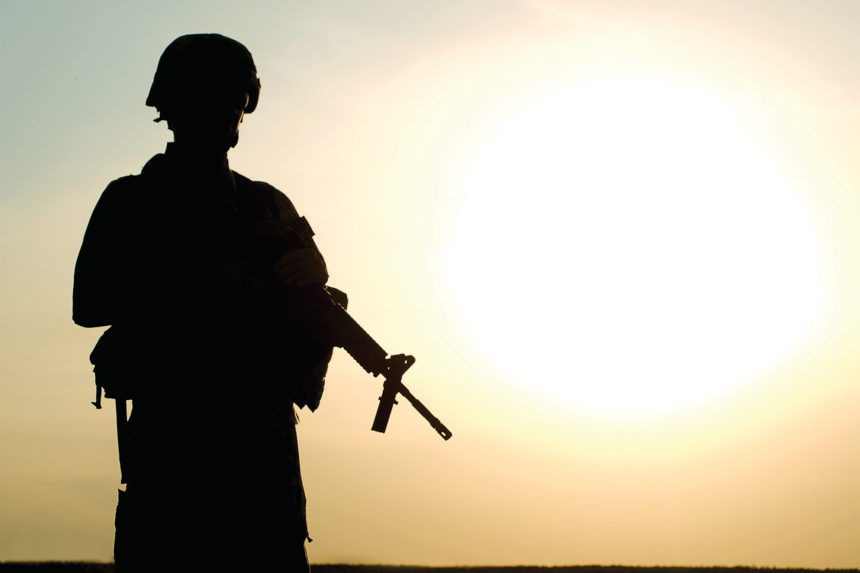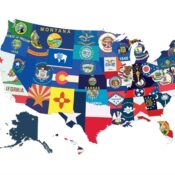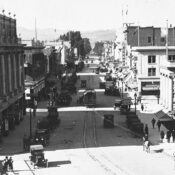I. The Unknown Infantryman
The room had that sterile smell you expect in hospitals: a mixture of alcohol, cold air, and fear. I had stopped at the nurses’ station to gown up. The area I was entering was a clean room, which required all visitors to put on a full white overgarment, a mask, rubber gloves, and blue booties.
It was May 2007 in Landstuhl, Germany, home of the military’s premier hospital complex in Europe. I was a two-star admiral in charge of all the special operations forces in Europe and Africa. As such, I often traveled from my headquarters in Stuttgart to visit the wounded soldiers returning from combat in Iraq and Afghanistan.
Most of these soldiers had severe injuries. So severe that a stop in Landstuhl was required to ensure they were stable enough to make the final journey back to the States.
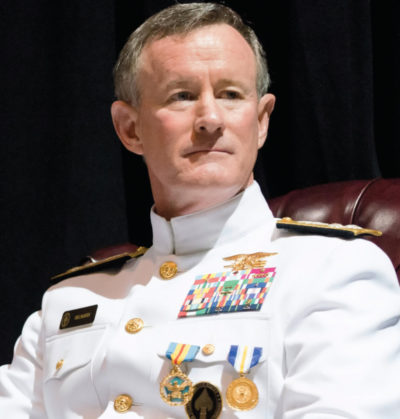
In addition to seeing the wounded special operations soldiers, I usually stopped by to visit whoever was in ICU.
“What’s this guy’s story, Doc?” I said, pulling the strap of my mask a little tighter.
“Sir, all I know is that his unit was hit by a large IED. As you will see, he sustained significant blast injuries.”
“What’s the prognosis?”
“He’ll live, but it’s going to be a very long recovery.”
The doctor paused. “We have a no‑contact rule in the clean room. So please don’t reach out and touch him, even if he offers to shake hands.”
“Roger, understand.”
The doctor nodded, and I pushed the door open and entered.
Lying on the bed, completely naked, was a young soldier not more than 25 years old. His body was swollen from the impact of the blast. Burns covered the upper half of his torso, and below his waist he had lost half of one leg and much of the other.
His face was so badly damaged that his eyes were almost sealed shut and his lips burned clean off. Lifesaving tubes extended from just about every orifice in his body, and monitors around the room beeped continuously.
“Sir, he can’t talk, but he can hear you, and he likes to engage people,” the doctor said.
I slowly walked up beside the bed, cautious not to touch the young man.
“Hey partner, my name’s Admiral McRaven.” I could see him acknowledge my presence. “You look like shit!”
He managed a smile and reached out his hand toward the nightstand.
The doctor grabbed a clipboard and handed it to the soldier.
“He likes to write his responses out.”
Pulling the attached pen from its holder, he scribbled on the notepad You should see the other guy.
I laughed and he chuckled with me.
“Looks like they are taking good care of you. Is there anything you need?”
Once again he grabbed the clipboard: A beer.
The doctor looked at me and reluctantly shook his head.
“Well, I tell you what. You get back to the States, get well, and the beers are on me.”
He just nodded.
“Sir, all I know is that his unit was hit by a large IED. As you can see, he sustained significant blast injuries.”
I was struggling with what to say. I had been in these situations hundreds of times before and all you could do was make small talk.
Normally, I knew the soldier or his unit and I had something more significant to offer. I walked around to the doctor’s side of the bed.
“Is he a Marine or a soldier?” I whispered to the doctor.
“Sir, I don’t know. I’m just the attending physician. I can find out for you, though.”
“No, not necessary.”
Walking back around to my side of the bed, I leaned over the young man and asked, “Are you a Marine or a soldier?”
He seemed agitated by the question. He pointed to a tattoo that was etched on his thigh. He must have assumed that the tattoo was fully visible, but the blast had burned the leg so badly that only a smudged outline appeared.
I looked closely and could see the image of a Big Red One: the 1st Infantry Division.
“You’re a soldier,” I commented.
He grabbed the clipboard. Infantry, he wrote.
Infantry. The toughest occupation in the Army, I thought. The soldiers are always road marching, always carrying a rucksack, always in the line of fire. You have to be strong and fit to last in any infantry unit, particularly during war.
As I glanced at the young man’s battered body, I wondered if he fully understood the degree of his injuries.
He noticed me assessing his physical condition, and suddenly a look of defiance came across his swollen face. He rolled in my direction and then wrote slowly in capital letters, I WILL BE INFANTRY AGAIN!
I read the note aloud and he nodded, tapping the clipboard for emphasis. “Yes. Yes,” I stumbled. “You will be infantry again.”
He smiled and rolled back over.
Somehow, I believed him. I had seen it time and time again.
These young men and women who had joined the Army during the war had a tremendous sense of determination. Nothing was going to stop them in the pursuit of their dreams. And setbacks like this — well, sometimes that was the price of being a soldier.
I left the room and never saw the young man again. I like to believe that he is marching alongside his comrades, two prosthetic legs moving him in rhythm to the cadence. I like to believe that his swollen body is back to normal and that his washed-out tattoo has been replaced with bright new ink. I like to believe he has returned to some sense of normality. I like to believe, because I must. He left me no choice.
II. Senior Chief Petty Officer (SEAL) Mike Day
I’ve learned that life has a mystical aspect to it. As a man of faith, I have felt the hand of God too many times not to know that it exists. But when you see his handiwork up close, when you examine all the possible outcomes and determine that only one outcome is possible — but then something else happens — that’s when you know there is more to life than meets the eye.
The nurse at the Landstuhl intensive care unit was almost speechless.
“I’ve been in nursing over 20 years,” she said. “And I’ve been here at Landstuhl for the past three years. I’ve seen some of the worst injuries of the war.” She started to tear up, but they were happy tears.
“I have never seen anyone shot up this bad.” She paused. “He’s got 16 bullet holes in him” — she took a deep breath — “and he is going to be fine.”
I smiled and thanked her and her team for everything they had done to save my fellow SEAL. She looked at me, shook her head, and said, “We had nothing to do with it.”
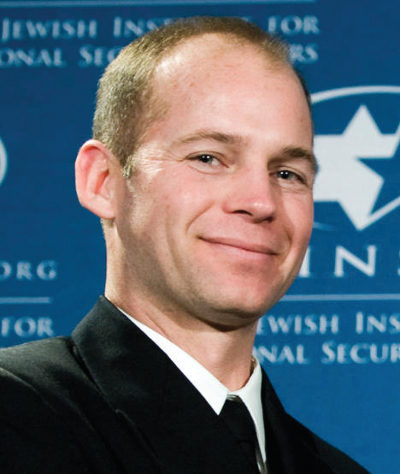
I understood. Life is that way sometimes.
The man in the hospital room was Senior Chief Petty Officer Mike Day. Mike had served with me in SEAL Team Three. He was a character: a bit mouthy, in a funny Team-guy sort of way. Always had a joke, nothing seemed too serious, but he was a great SEAL operator and a good sailor. I had lost track of Mike after I left the West Coast. Now we were reunited in the worst of all possible situations. A hospital.
Talking with Mike’s military escort, I got the whole backstory. During a raid on a house in Iraq, Mike had been leading a joint U.S.-Iraqi squad. The squad, led by an Iraqi officer, with Mike following right behind, stacked on a door leading into the kitchen area of the home. On order, the Iraqi officer breached the door and the squad stormed in. The room was not the kitchen as expected, but a smaller anteroom. The Iraqi officer froze; the flow of the squad came to a halt.
Mike knew that time was now of the essence. The bad guys inside would clearly have heard them. Mike yelled at the Iraqis to continue the squad surge into the next room, but fear overcame the Iraqis and they began to retreat out the door.
Mike took charge and led the team through the next door, but it was too late. Four insurgents with automatic weapons lay waiting. They opened up on full automatic, bullets flying everywhere.
Mike was immediately hit in his Kevlar chest plate, with several rounds piercing his arms and legs. As the bursts from enemy fire continued, Mike’s M‑4 rifle was cut from his body by an ensuing round and he crumpled to the floor, having sustained 27 direct hits in a matter of seconds. Behind him three others were killed, including a young SEAL officer who sustained a single shot to the back of the head.
Lying on the floor, bleeding severely, Mike pulled his handgun from his holster and, one by one, killed the insurgents. And then, in classic Mike Day fashion, he got on his radio and called to the team outside to calmly let them know that the house was clear. Medics stabilized Mike at the scene, and within a day he was on his way to Landstuhl. At the time, no one knew whether or not he would survive.
As with so many of my other visits to the hospital, my wife, Georgeann, had joined me. Peering through the window, we could see Mike lying on his back with the usual array of monitors and IVs protruding from his body. The nurse opened the door and cautioned us not to stay too long. Mike still had another surgery to undergo before they moved him back to the States.
As I entered the room, Mike perked up, raised his hand high in the air, and yelled loudly, “Hey, skipper! Great to see you!”
“Michael!” I boomed back at him at an equally high volume. “Are you lying down on the job again?”
“No sir! Just getting ready for the next fight!”
I shook my head and laughed.
As I got closer to Mike’s bedside I was stunned by what I saw.
“I have never seen anyone shot up this bad.” She paused. “He’s got 16 bullet holes in him” — she took a deep breath — “and he is going to be fine.”
There was hardly any part of his body that didn’t have a bullet hole. Only his chest, where the Kevlar vest had protected him, was free of wounds.
I sat for about 30 minutes and listened to Mike’s story. As the minutes went by, I could see him struggling to stay awake. Finally, he looked me in the eye and said, “Sir, when do you think I can get back to the guys?”
Looking down at Mike’s tattered body and the colostomy bag plugged into his bowels, I knew the answer, but sometimes the truth wasn’t always the best response. u
“As soon as you can kick my ass on the obstacle course, then you can get back to the guys,” I said.
Mike rolled his eyes and smiled. “Well, that shouldn’t be too hard.”
The morphine started to kick in and he slowly drifted off to sleep.
I look back on the hundreds of men and women I visited in the hospitals. Every single one of them — every single one of them — asked me the same basic question: When can I return to my unit? When can I be back with my fellow soldiers? When can I get back in the fight? No matter how battered their bodies, all they could think about were their friends, their colleagues, their comrades, still in harm’s way. Never once — never once — did I hear a soldier complain about their lot in life. Soldiers with missing legs, blinded soldiers, paralyzed soldiers, soldiers who would never lead a normal life again, and yet not one felt sorry for themselves.
Later that week, Mike was transferred back to the States. His injuries were too severe for him to get back in the fight, but that didn’t stop him from serving his fellow warriors. Today Mike helps veterans with post-traumatic stress disorder and traumatic brain injury. He gives back to the nation every chance he can. Over the years that followed, I would run the obstacle course every chance I could, knowing that one day Mike would show up to challenge me. I needed to be ready.
III. Sergeant Brendan Marrocco
As my security detail pulled up to the entrance of Walter Reed hospital in Washington, D.C., Sgt. Maj. Thompson stepped out from the main building and greeted me with a smile and a sharp salute. “Sir, good to have you back.”
“Thanks, Sergeant Major,” I said, shaking his hand. “Where is your brother, the other Sergeant Major Thompson?”
He smiled.
It was a running joke. The Thompson “twins” were the two senior enlisted men who provided patient advocacy for the special operations soldiers at Walter Reed. One was black, the other white. But, down deep, they were both Army green and damn proud of it.
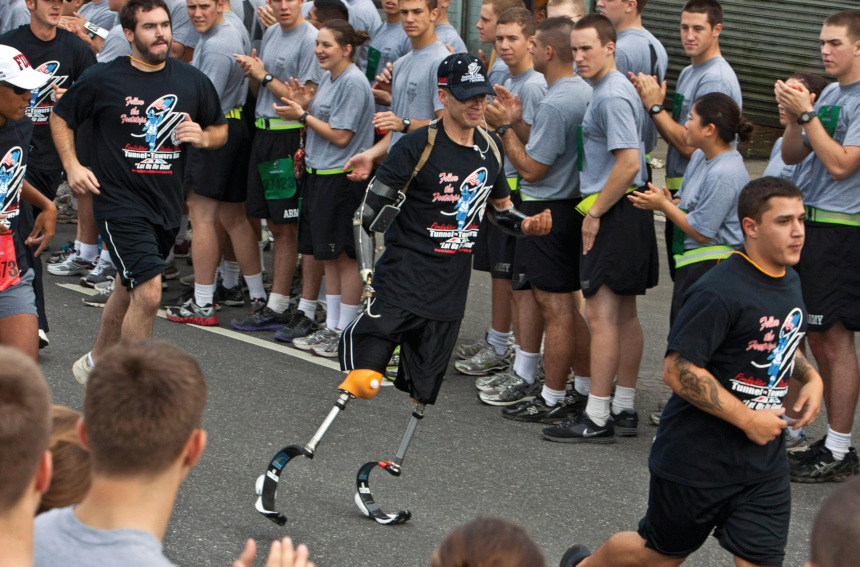
“Sir, he’s down in the Advanced Training Center talking to our newest patients.”
The ATC was a remarkable 31,000-square-foot facility that helped soldiers with amputated limbs get back to some sense of normalcy. It was equipped with a state‑of‑the-art prosthetics lab, the finest rehabilitation technology, and world-class doctors. But what really made it special were the soldiers who, under the most difficult of circumstances, bonded together as a unit, each soldier helping his or her brothers and sisters to heal.
I loved to visit the ATC because it was like being on the grinder during morning SEAL calisthenics. Everyone harassed each other. They challenged one another. They wouldn’t let you feel sorry for yourself. Stop your whining. So you lost two legs. So what! Now you can get two new ones that will make you taller. Maybe then the women will notice you.
After I had spent an hour or so with several of our special operations soldiers, Sgt. Maj. Thompson pulled me aside.
“Sir, there is one soldier here from the 25th Infantry Division that I would like you to meet. His vehicle was hit by an EFP in Iraq and he is now a quadruple amputee. His unit is still overseas, so he hasn’t gotten a lot of visitors yet.”
“No problem, Sergeant Major. Just point me in the right direction.”
The sergeant major subtly nodded to my left, and it didn’t take long to figure out who he was talking about.
Leaning against the wall was a young man balancing on his “shorties,” new prosthetics attached to what was left of his legs. The shorties raised him just inches off the ground and were the first step in preparing him for the more challenging full artificial limbs. Not only was he missing two legs, but the blast from the explosively formed projectile had also severed both his arms, burned his neck, and left him with lacerations across his face.
I had seen a lot of amputees, but when the human form is so changed by either nature or the violence of man, it still takes your breath away.
The sergeant major saw the look in my eye.
“I know, sir,” he said, acknowledging the sorrow we both felt.
Turning from the sergeant major, I walked over to the young man and took a knee so that I could face him eye to eye.
“Good afternoon,” I said, extending my hand to shake what remained of his right arm.
He looked at me, trying to determine what manner of uniform I was wearing. “You’re a general?” he asked, looking at the four stars on my chest.
“Well, an admiral, actually,” I said, smiling. “What’s your name?”
You’re missing all four limbs, have burns and cuts throughout your body, and someone else has it worse?
“Brendan Marrocco,” he replied politely.
“I understand you’re with the Tropic Lightning,” I said, referring to the infantry division’s nickname.
“Yes sir!” He smiled, trying to stand a bit more erect. “Alpha Company, 2nd Battalion, 27th Regiment.”
“Looks like you had a rough go of it in Iraq.”
He looked to the ground where his legs would have been and then quickly surveyed the rest of the room packed with amputees.
“Yeah, but not as bad as some of the guys.”
It was hard to hide my expression. Not as bad as some of the guys, I thought. You’re missing all four limbs, have burns and cuts throughout your body, and someone else has it worse?
Standing next to Marrocco was another young man.
“Sir, this is my brother Mike.”
I greeted Mike, but I could tell he was devastated by what had happened to his younger brother. The sadness on his face was heartbreaking. I turned back to Marrocco.
“Are they taking good care of you here?” I asked.
“Yes sir! The docs and the nurses have been terrific, and I love being around the guys.”
“Anything I can do for you?”
He didn’t hesitate for a second. “Yes sir. I would like to get back to Hawaii and meet my company when they return from Iraq.”
If you’re lucky in life, there is a moment, a moment you never forget, when you meet someone whose entire world has been turned upside down and they find a way to inspire you. They find a way to show you that you can rise above all of life’s difficulties. They find a way to make the human condition, regardless of its form, seem perfect. Kneeling face‑to‑face with young Brendan Marrocco, I had one of those moments. He must have seen something in my eyes — pity, sorrow, regret — because he cocked his head and smiled.
“Sir,” he said, touching me with what remained of his right arm. “I’m 24 years old. I have my whole life in front of me. I’m going to be just fine!”
I’m going to be just fine.
I never forgot those words, and when life got a little difficult for me, I remembered that moment again and again. I repeated those words over and over. I am going to be just fine.
Postscript: Brendan Marrocco got to Hawaii in time to greet the returning 25th Infantry Division. In 2012, he underwent a successful bilateral transplant that gave him two new arms. Today he travels the country telling his story and helping those he considers less fortunate than himself.
Admiral William H. McRaven (U.S. Navy Retired) is the author of the #1 New York Times best-selling book Make Your Bed. In his 37 years as a Navy SEAL, he commanded at every level. As a four-star admiral, his final assignment was as commander of all U.S. special operations forces.
This article is featured in the November/December 2019 issue of The Saturday Evening Post. Subscribe to the magazine for more art, inspiring stories, fiction, humor, and features from our archives.
Featured image: Shutterstock.com
Become a Saturday Evening Post member and enjoy unlimited access. Subscribe now
